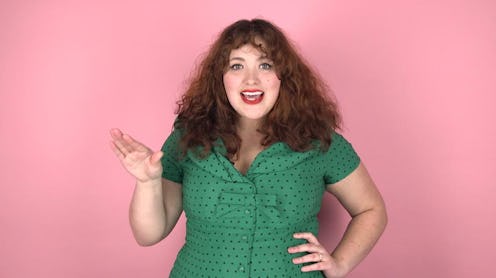
In some ways, it feels like 2015 has been the year of body positivity. We've been seeing the term pop up everywhere — from the glossies to morning TV to Internet publications to the Kardashians' Instagrams. But what exactly does it mean?
While it's important to remember that everyone's interpretation of body positivity is unique, at its core the term represents this wild idea that all bodies are good bodies. All bodies are worthy of self love, self care, and acceptance. All bodies are allowed to feel beautiful, regardless of their color or jean size or health status or how attractive you personally find them to be.
Thus far, many body pos activists (myself included!) have been focusing on combatting this belief that thin is always good and fat is always bad. You've heard it before, right? Thin is beautiful and fat is ugly. Thin is always healthy and fat is always unhealthy. Fat TV characters aren't the protagonists. They're the comedic relief. Fatness in general is the comedic relief.
As with any radical movement, the influx of size acceptance has also come with a conversation about terminology. Is it ok to use the word fat? Is it ok to say "plus size?" Is "curvy" better than "thick?" Again, everyone has different interpretations of these things. But the basics go a little something like this.
Image: Bustle Studios